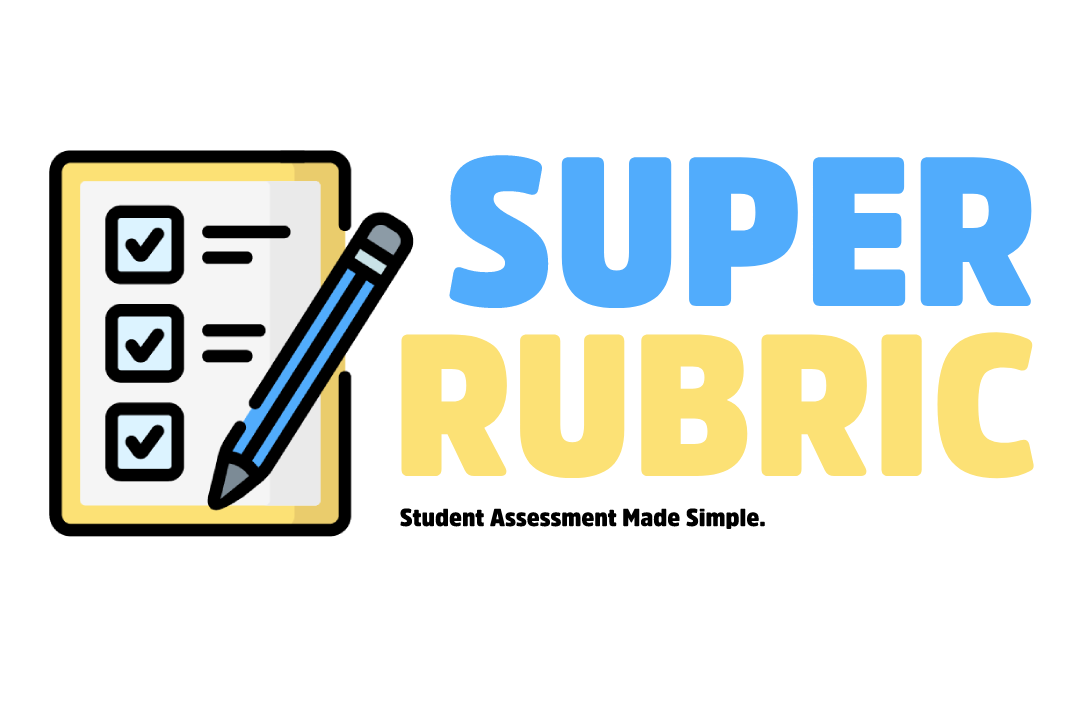An essay rubric for high school is a great way to assess students. Not only do essay rubrics help students better understand the assignment, but they can also make your job as a teacher easier.
In fact, our case studies show that when classes are assessed using rubrics, student grades improve.
Our essay rubric is designed for high school writing projects. We know that the process of explicitly teaching writing strategies is difficult enough without having to worry about essay assessment. Not to worry, our essay rubric comes with five simple assessment criteria. We’ve also taken care to embed Bloom’s taxonomy into key criteria descriptions.
That said, let’s provide you with a quick breakdown of our analytic essay rubric for high school and get you back to teaching.
Analytic Essay Rubric for High School
Essays are one of the most common writing tasks in high school. That said, writing an essay is not an easy skill to master. Students need to understand how to organize their ideas, insert references to support their thoughts, and create a unique-cohesive story. That’s why we love rubrics – they help students better understand how and what they should focus on.
Our essay rubric for high school is an analytic rubric. This means we have five different assessment criteria that are all assessed separately – each with unique percent weights.
At first glance, the essay rubric can look like a lot – but we’ve designed these to be easily editable in our online software.
Let’s take a closer look at each of the assessment criteria on our essay rubric.
1. Content & Clarity (35%)
|
Limited depth of content. Clarity in writing is not apparent. Keywords: recalls, records, tells, repeats |
Some depth of content. Clarity of writing needs development.
|
Moderate depth of content. Writing demonstrates good clarity.
|
Thick description. Detailed content provides very good clarity.
|
||||||||
| D- | D | D+ | C- | C | C+ | B- | B | B+ | A- | A |
A+ |
2. Thematic Organization & Thesis (20%)
|
Lack of coherent themes. Unclear and difficult to understand thesis. Keywords: matches, retells |
Moderate use of themes. Thesis shows some detail and some organization..
Keywords: selects, quotes, lists |
Appropriate organization. Satisfying articulation of ideas.
Keywords: articulates, determines, inferrs, summarizes, questions, explains |
Logical, structured and engaging ideas create clear themes and organization.
Keywords: reflects, defends, debates, predicts, solves |
||||||||
| D- | D | D+ | C- | C | C+ | B- | B | B+ | A- | A |
A+ |
3. Formatting & References (15%)
|
High degree of errors in formatting. Student does not use references to support their work. . |
Frequent or severe errors in formatting. Uses and cites some sources. | Limited errors in formatting and references. Writer cites sources with accuracy. | No errors in formatting and references. Writer uses references to strengthen content and develop themes. | ||||||||
| D- | D | D+ | C- | C | C+ | B- | B | B+ | A- | A |
A+ |
4. Use of Language and Conventions (20%)
|
Very high degree of errors in sentence structure and word usage makes writing difficult to understand. |
Moderate errors in grammar, sentence structure and word usage. | Limited errors in grammar, sentence structure and word usage. Content is easy to read. | No errors in grammar, sentence structure and word usage. Creative use of language provides a thick, narrative description of content and themes. | ||||||||
| D- | D | D+ | C- | C | C+ | B- | B | B+ | A- | A |
A+ |
5. Perspective/ Writing Rhetoric (10%)
|
Writing is limited in depth. Limited effort made to create unique and persuasive work. |
Writing has some depth. Moderate effort made to create unique and persuasive work that creates a new understanding of topic. | Writer displays good understanding for rhetoric and helps reader to understand unique perspectives drawn from critical thinking. | Writer creates a thick description that leads to mastery-level writing. Perspective is clear, planned, and leads to discovery. | ||||||||
| D- | D | D+ | C- | C | C+ | B- | B | B+ | A- | A |
A+ |
How to Use Essay Rubric for Assessment
So you’ve had a chance to read each of the criteria but you might be asking yourself – how would I use this?
Well, a rubric can be used as both a formative (ongoing) assessment tool, but it can also be used as a summative (final) assessment tool. We’d suggest following a few important steps to ensure your students get the most from their rubric.
- Talk about the rubric
It’s important students have an opportunity to ask questions and understand how they will be assessed. - Use the Rubric on an Example essay
This is one of the best ways for students to see rubrics in action. Take an essay from a previous class and use the rubric to assess the paper live, in front of your students. Be sure to discuss what you are assessing and why. - Be open to peer/self-assessment
Getting students involved is a great way to achieve engagement. Have students mark their essay outline – this way they will see where they are strong and what areas they might need assistance with. - Provide frequent feedback with lots of notes
Qualitative feedback is a great way to help students grow and develop an awareness of their strengths and areas for growth. Use the sections that allow text to write feedback related to the essay rubric.
Remember, our rubric software comes with pre-built information – but this doesn’t mean you can’t tweak the rubric to suit the needs of your students. For more information on how our software works, click here.
Enjoy student assessment made simple with templates, gradebooks, and smart reporting software.









You must log in to post a comment.